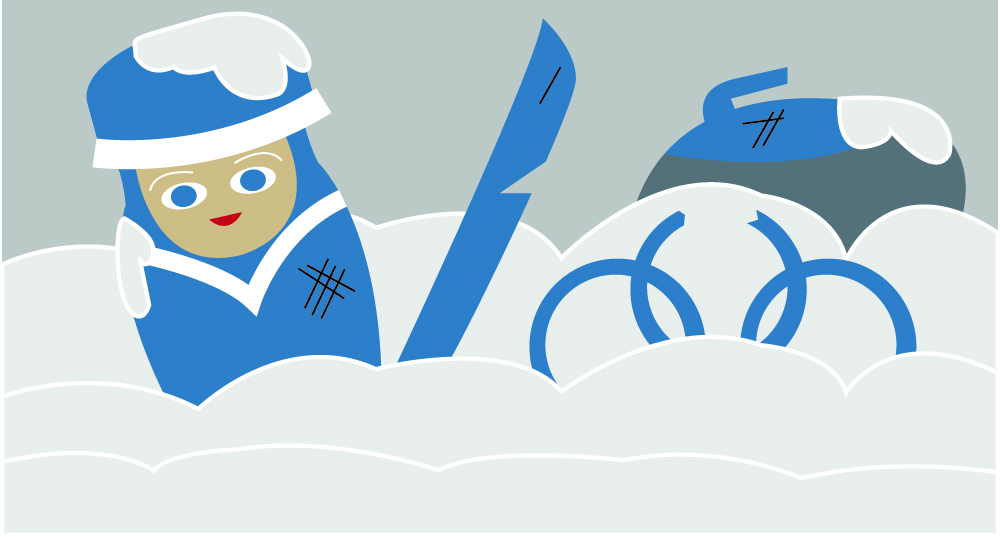Comics are an unconventional but excellent way to learn about the world, and the internet is helping to push along the explosion of new and talented comics. A work of art can say much about the artist’s own opinions and the circumstances of a society.
One relatively recent comic that reveals much about life in modern Europe and a European-centered view of the world is Scandinavia and the World, a Danish webcomic by the partially anonymous artist Humon. Simultaneously enlightening and obfuscating, Scandinavia offers lessons in history and politics intelligently blended with humor and raunchiness, yet indulges in smugness and a desire to avoid taking any strong stands on many issues.
Debuting in 2009, Scandinavia and the World imagines the world populated by countries represented as human beings, with the three principal characters introduced at the comic’s inception: goofy Denmark, uptight Sweden and tree-hugging Norway. Over the course of the comic’s run (which is still ongoing) Humon has added a plethora of new nation-characters to the story, imbuing each character with quirks, stereotypes and storylines that mirror the events of the real world. North Korea, for instance, is a perpetually hooded figure wrapped in the flag of his country and occasionally emerges to wreak havoc. Romania is a charming vampire and skilled pickpocket, Finland a taciturn hunter who possesses a volcanic temper, and so on. There is no strict plot or extremely strong continuity; events can occur surreally, characters sometimes fight, make love, brag about their national accomplishments, go to the beach and give the comic the strong vibe of a sitcom. Scandinavia has frequently earned comparisons to Axis Powers Hetalia, the immensely popular Japanese webcomic turned TV show that similarly depicts nations as characters and pits them together in friendships, rivalries and competitions.
Scandinavia has enjoyed less publicity and franchising than Hetalia, yet it has plenty of merits and surpasses any history book or documentary in its ability to deliver hilarious and educational lessons about European history and culture. Readers learn that Denmark was born from sand and surf and is never far from a bottle of beer, while Germany is a meek man perpetually terrified of being associated with the Third Reich, begging for forgiveness when someone yells “Yahtzee!” and emitting the blue screen of death from his eyes after seeing a puppy perform the Nazi salute. These are just two of countless more examples of the strip’s exploits; upon further examination, unfortunately, there is underlying smarminess and reluctance to discuss issues beyond a superficial manner, and Humon’s treatment of one of the strip’s most prominent characters, America, deserves special mention.
When we first meet America he hollers, as he does in almost all of his appearances, that he wants to ski. The problem is, he has come to Denmark, a notoriously flat country where skiing is impossible. America’s ignorance of language, history and geography is made blatant almost whenever he opens his mouth; he turns King Europe into his servant, towers above the rest of the cast and zealously proclaims his delight at not having universal healthcare. All of this is tolerable initially, but what is grating is that these jibes become Humon’s bread and butter for generating laughs. The jokes about Americans being provincial loudmouths who refuse to respect international opinion or speak any language other than English are jokes we have all heard for years, and Humon seems to still think they are terribly creative and edgy. In this light, Scandinavia veers away from being cheerful and amusing to being lazy and mean-spirited.
When it comes to more serious issues, Humon similarly disappoints. In order to represent the growing diversity of America and arrival of immigrants that negates America’s status as a white-majority country, Humon gives America a darker skin tone to mean that he is tan instead of pale. America is dismayed, and the other nations enjoy a laugh at the change. Curiously, Sister America stays white (there are male and female counterparts for each country), and Humon has no trouble assuming that Americans are an inherently intolerant people who would greet diversity with trepidation. The message leaves an even worse taste in our mouths when we consider that many nations in Europe— including Humon’s Denmark—have welcomed millions of immigrants, namely from the Middle East and North Africa. These social changes have not occurred without tension, as Europe has seen far right political parties, terrorist attacks, increases in neo-Nazi activity and other debates about the desirability of immigration. With all of the demographic changes in Europe, one would expect the European characters to receive skin darkening as well, yet they remain as pale as ever. Humon seems not to have noticed the hypocrisy.
These shortcomings, however, do not totally overshadow the inventive humor, Humon’s willingness to be frank about sexual matters and the impressive artwork that are present in Scandinavia and the World. Without Scandinavia, I would never have learned about stories as obscure and hilarious as the relationship between Sweden and the Aland Islands, Finland’s love of “perkele” or the outcomes of each year’s Eurovision song contest. More than any website or book, Scandinavia is a window into life and society in Europe, and most importantly, makes me laugh. That is more than I can say for most comics I read. I could do, however, without the thick layer of smarminess that refuses to recede after all of these years.






